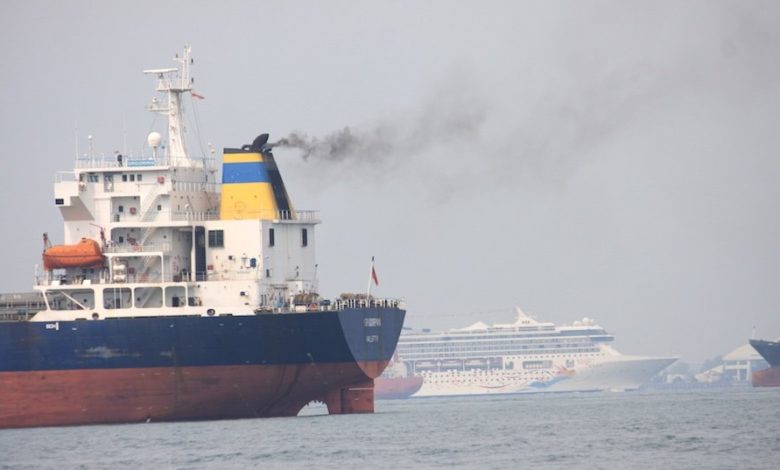LNG not shipping’s green panacea, as IEA warns of ‘huge disruption’ over looming 2020 sulphur cap

A report out this week suggests LNG is not the panacea for shipping’s fuel concerns now that member states of the IMO have voted in favour of cutting greenhouse gas emissions from ships in half by 2050.
The report, from Vienna-based JBC Energy, states that even if the entire global shipping fleet were to switch to LNG, the industry would still be short of its CO2 reduction targets by 350m tonnes.
JBC Energy said the shipping industry would need to seek out extra measures including efficiency gains, carbon capture and storage, hybrids and batteries to meet its newly set green targets.
An ongoing survey carried on this site sees a majority of readers believe that LNG as a ship fuel is only an interim solution on shipping’s green path. Interestingly, more than one in five readers believe that LNG is not a solution at all for shipping to meet its environmental goals.
Last November, Hamburg Messe und Congress, the organisers of the world’s largest shipping exhibition, SMM, revealed results of their own poll of 2,500 participants, which showed 44% of owners were contemplating ordering ships that were LNG fuelled.
In widely read article on this site from February, Dr Tristan Smith from UCL Energy Institute suggested the whole debate about LNG as a ship fuel was a “very expensive red herring”.
While LNG does help reduce air pollution, it is potentially worse than HFO in the context of GHG emissions, Smith argued. This is because methane is a potent greenhouse gas, and only a very small amount needs to escape to cancel out the combustion CO2 benefits
“LNG’s flaws are more fundamental – it is a fossil fuel that just like oil produces about three tonnes of CO2 for every tonne of fuel consumed. This makes it an ‘impasse’ in a world committed to decarbonise,” Smith wrote.
Separately, the head of the International Energy Agency’s (IEA) oil industry and market division has warned that the shipping industry and oil refineries are not doing enough to prepare for new sulphur cap rules coming to shipping in 2020.
“The reality is that the industry has already passed the date beyond the smooth transition,” the IEA’s Neil Atkinson, told an energy seminar in Oslo yesterday. “We don’t think it’s going to be a smooth transition,” he added in a report carried by Reuters.
Atkinson said that there has not been enough uptake of scrubbers to date, and that the IEA is worried about the market’s ability to meet demand for the low sulphur bunker fuel that ships without scrubbers will need come the start of 2020.
“There will be a scramble for new compliant fuel… it could be a huge issue in terms of a spike in prices for marine fuel and a very, very disruptive market, and that’s only 18 months away,” he said.
“There is going to be a huge disruption in the shipping markets, particularly in those markets where (there) is rigorous enforcement,” Atkinson said.
In an ongoing survey carried on this site, a slim majority of readers believe there will not be enough low sulphur fuel available for global shipping come the start of 2020 with one reader commenting: “Supply constraints will like start to effect the market as early as Q4 2019. Expect the price of MGO to double or triple in cost until the market can stabilize.”

This is certainly right. Not only does CH4 contain C,so to speak, but the stuff is likely to become considerably more expensive when everyone wants it.
Making assumptions that bureaucratically imposed targets are feasible seems to me like King Canute, trying to impose himself on the tides. Whatever improvements, they have to be workable, manageable and technically feasible.
Politicians have a dreadful track record on these matters. Historically many of their regulations have proven heavy-handed, economically punishing and counter productive.
The shipping industry has never been a major source of pollution. Now shipping has become a new guinea pig for these eager beaver, control freak regulators.
Time will tell where this goes, but the general nastiness towards the shipping industry and avoidance of any serious dialogue on these control and impose regulations is very disheartening and probably will lead to bad results.
Politicians score well on bad decisions generally and ruining people’s lives specifically…… They try to play God, but this merely reflects their enormous hubris and lack of humility.
Three points:
First, historically the shipping industry has been much smaller than it is now. Historically, sailing ships hardly emitted any greenhouse gases, but more recently than that the shipping industry today is growing at 4.2% per annum in ton mile terms, which means that the industry is doubling in size, and in its impacts on the environment, every seventeen years.
Second, there are workable, manageable and technically feasible solutions to GHG free merchant shipping.
Third, how much more dialogue would you like? The topic isn’t new. It has not been sprung on us suddenly.
MGO is increasingly looking like the preferred option for most, alot of issues with 0.5% substitutes as they stand now